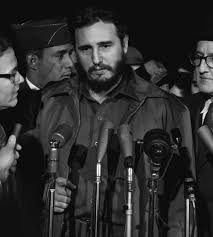So, there are some protests in Cuba. I don’t know how much they amount to; I’m no Cuba expert.
Dual currency systems designate one currency for purchasing internal goods and services, and another for external goods. Their purpose is to make sure that a country doesn’t spend more money on external goods than it is earning from exports of goods and services.
When there’s way more demand for foreign goods than there are export earnings, if you allow people to just buy whatever they want in a single currency system, your single currency collapses, leading to inflation or hyper-inflation.
There’s a reason Cuba ran a dual currency system before, and while getting rid of it allowed Cubans to buy more foreign goods to start, it has also contributed (along with Covid and US sanctions) to hyperinflation:
The result of dollarization, scarcity, and devaluation: Prices have skyrocketed and inflation will likely come in at a minimum of 500 percent, and as much as 900 percent this year, according to Pavel Vidal, a former Cuban central bank economist who teaches at Colombia’s Pontificia Universidad Javeriana Cali.
Hyper-inflation destroys regimes.
Cuba is caught in a trap; they don’t have enough of anything, including food. Their primary ally, Venezuela, can no longer help (also being caught in hyper-inflation). Letting Cubans buy directly in dollars and getting rid of caps on imports must have seemed like a way out.
But shortages are shortages: Moderate inflation helps ease them, hyper-inflation simply imposes them on a different group of people -— those who can’t get foreign currency, a.k.a., US dollars.
Were I advising Cuba, I would suggest going back to the dual currency regime. Long lines and evenly-distributed shortages are tolerated much better than hyper-inflation-induced shortages because they are far more fair and predictable.
(My writing helps pay my rent and buys me food. So please consider subscribing or donating if you like my writing.)

